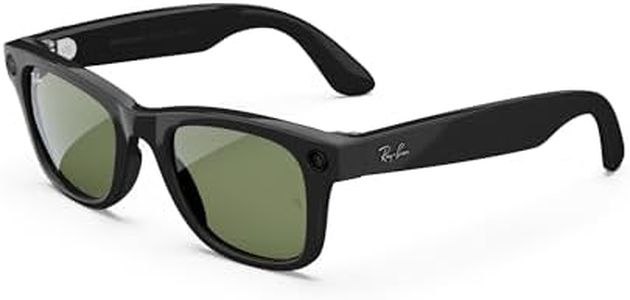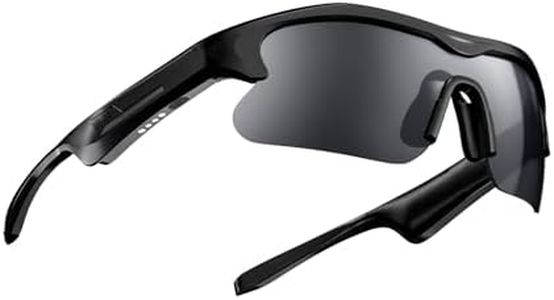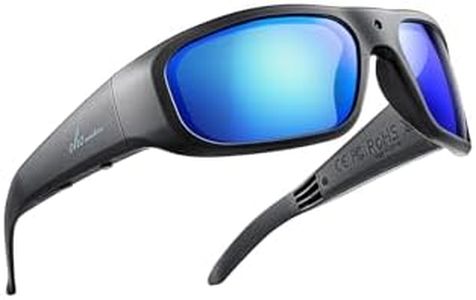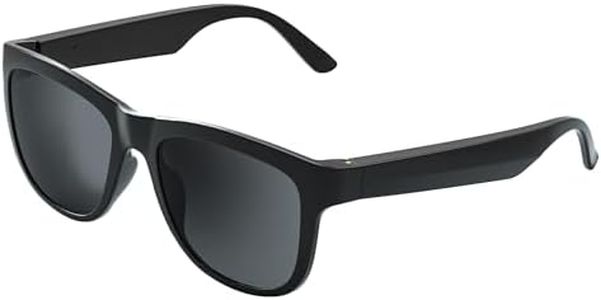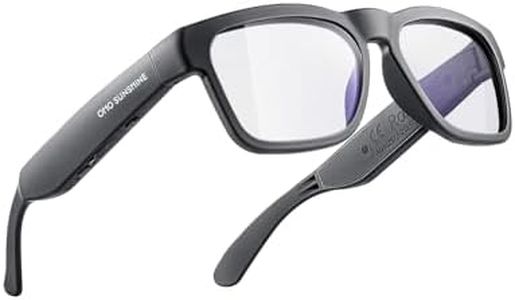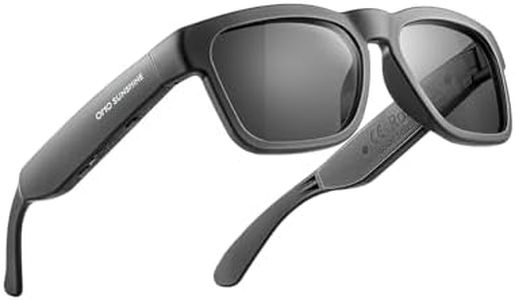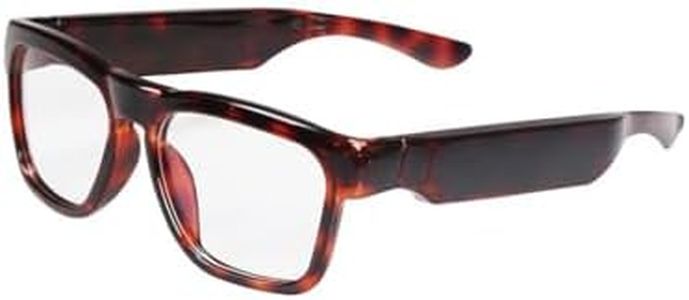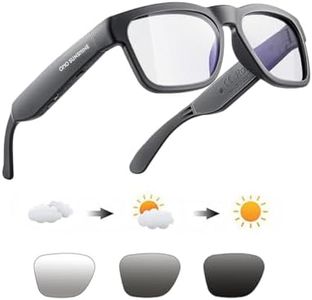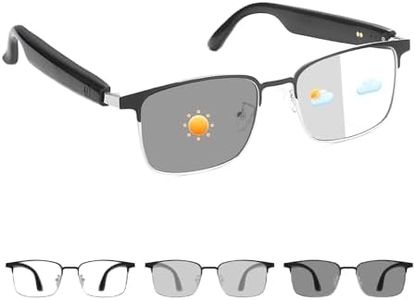We Use CookiesWe use cookies to enhance the security, performance,
functionality and for analytical and promotional activities. By continuing to browse this site you
are agreeing to our privacy policy
10 Best Bluetooth Smart Glasses
From leading brands and best sellers available on the web.Buying Guide for the Best Bluetooth Smart Glasses
Bluetooth smart glasses are wearable devices that combine regular eyewear with technology, allowing you to make calls, listen to music, or even access virtual assistants hands-free. When choosing a pair, think about how and where you plan on using them—whether it's for daily commutes, workouts, driving, or staying connected on the go. The best fit for you balances comfort, tech features, and style with your daily habits and needs.Battery LifeBattery life refers to how long the glasses can run on a single charge during typical use. It's important because it determines whether the glasses will last through your entire day or activity without needing a charge. Shorter battery life can range from 2-4 hours, which may suit short commutes or workouts, while medium to longer battery life (5-8 hours or more) is better for regular, all-day use. Think about how long you'll be wearing the glasses away from a charging source, and choose battery longevity that matches your routine.
Audio QualityAudio quality describes how well you can hear music, calls, and notifications through the glasses' built-in speakers. This matters most if you'll use your glasses for calls or entertainment in noisy or quiet environments. Lower-end smart glasses offer basic clarity suitable for voice calls, while higher-end ones provide richer, fuller sound for music and immersive experiences. If you're an audiophile or planning to use the glasses in loud places, prioritize better audio quality; for occasional calls or basic use, standard audio will suffice.
Fit and ComfortFit and comfort refer to how the glasses sit on your face and how comfortable they remain during prolonged wear. This is crucial since uncomfortable glasses can cause headaches or discomfort quickly. Lightweight materials and adjustable nose pads suit everyday wear or sports, while heavier, bulkier designs might feel secure but uncomfortable over time. If you wear glasses all day or during active movement, prioritize lighter, ergonomically designed frames to avoid fatigue.
Lens OptionsLens options include whether the glasses offer prescription lenses, polarized lenses for sun protection, or clear lenses for indoor use. This is important because it determines where and when you can wear the glasses comfortably—indoors, outdoors, or both. Some models support replacing standard lenses with prescription ones, while others only offer generic lenses. Choose according to your eyesight needs and whether you're often outside or require sun protection.
Control FeaturesControl features refer to how you interact with the glasses—via touchpads, buttons, or voice commands. This matters because it affects convenience and how discreetly you can control playback, adjust volume, or answer calls. Touch controls are sleek but can be accidentally activated; button controls may be more reliable but less futuristic. Voice control is hands-free but depends on ambient noise levels. Pick the control method that feels most natural and comfortable for you based on typical usage and environment.
Bluetooth ConnectivityBluetooth connectivity describes how the glasses connect wirelessly to your phone or other devices. Higher Bluetooth versions usually mean a more stable connection, longer range, and lower battery use. Bluetooth 5.0 and above offer improved reliability and distance, which is helpful if you don’t keep your phone right next to you. For most users, recent Bluetooth versions will reduce dropouts and ensure smoother pairing, so choose accordingly if you expect to wander away from your device.
Water and Sweat ResistanceWater and sweat resistance indicates whether the glasses can handle rain, sweat, or splashes, which is important for outdoor use or workouts. Some glasses provide basic splash resistance suitable for light rain, while others are designed to withstand heavy sweat or even brief immersion. Assess where you'll be using the glasses—if it's for jogging or outdoor commuting, higher resistance is better; for office or indoor use, basic protection will do.
Microphone QualityMicrophone quality measures how clearly your voice is picked up for calls or voice assistant commands. It matters most for users who make frequent calls or use smart assistants, especially outdoors or in busy places where background noise can interfere. Basic mics are enough for quiet environments, while advanced noise-cancelling mics are preferable for anyone needing clear calls on the go. Choose based on your calling habits and typical environment.
